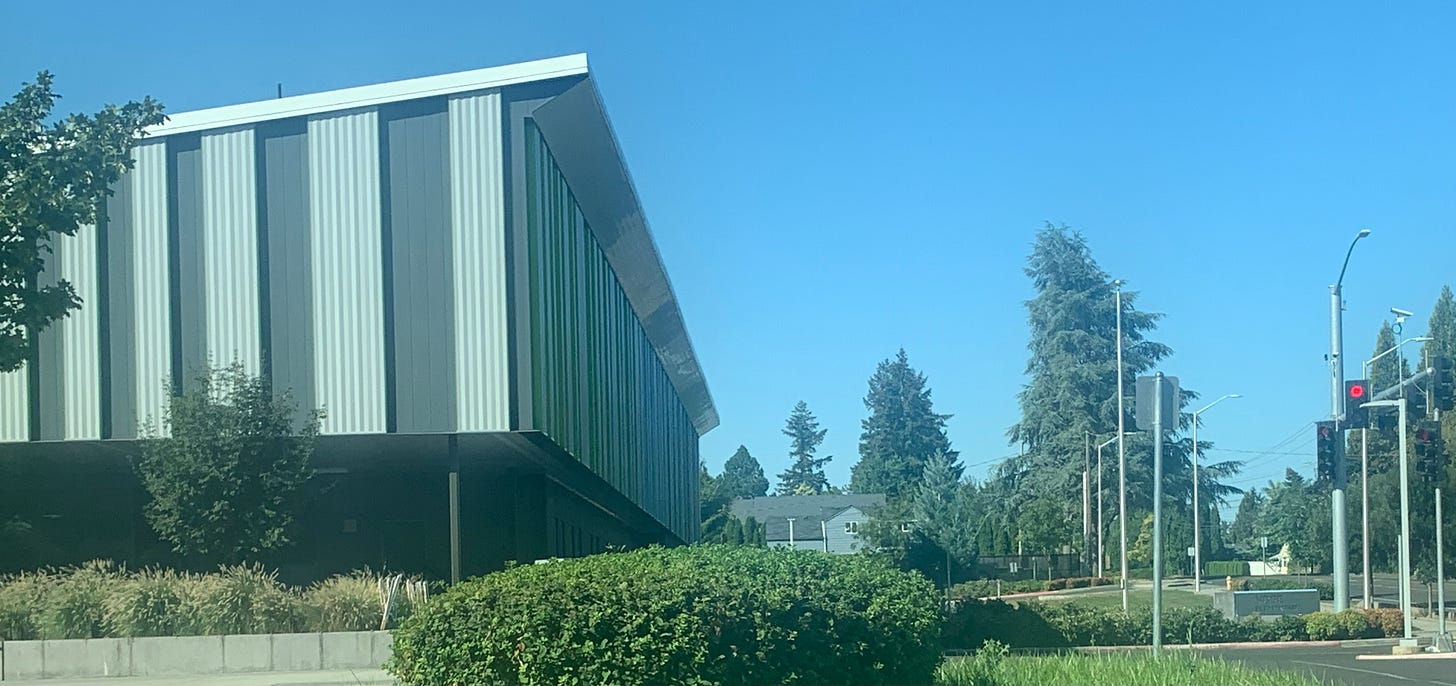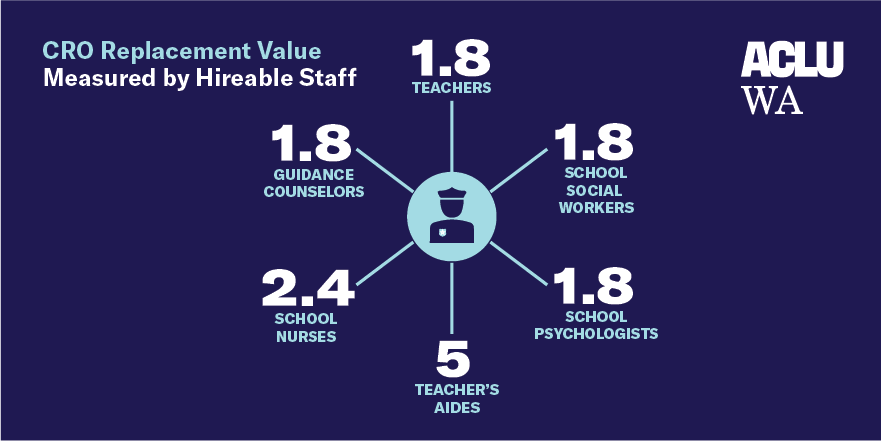Why SROs are a bad idea for Oregon
Preponderance of studies and evidence show school resource officers have no impact on safety in schools and make students feel less safe
Depending on where you focus your attention on the political spectrum, some want you to believe that safety in schools is a simple equation. It goes something like this:
Schools + Police = Safety
Except that’s a made-up equation. The two elements on the left side do not add up to the sum on the right. In fact, the overwhelming majority of evidence and study would demand an equation more like this:
Schools + Police ≠ Safety
Or, more precisely
(Schools - Police) + Resources = Safety
It’s not complicated, school resource officers don’t help, they hurt
School board candidates and their supporters typically fall into two camps in Oregon - those who see cops in corridors as a solution, and those who see mispent resources with net negative consequences.
One side of this divide is supported by facts, evidence, and rigorous study. The other side is…mostly feelings.
Let’s take a look at what we actually know about School Resource Officers.
What are SROs?
According to Education Week, an SRO is:
“...a sworn law-enforcement officer with arrest powers who works, either full- or part-time, in a school setting. Nearly all SROs are armed (about 91 percent, according to federal data), and most carry other restraints like handcuffs as well.”
But, Education Week also notes, research shows school resource officers seem to have inconsistent training across states.
“States set different requirements for what training SROs need to have before working in schools, and some SROs report feeling unprepared for the job. In a 2018 Education Week Research Survey of SROs, about 1 in 5 respondents said they didn’t have sufficient training to work in a school environment, only 39 percent said they had training on child trauma, and about half said they hadn’t been trained to work with special education students.”
Relative to other states, Oregon has virtually no state-level rules or regulations around school resource officer training or requirements for law enforcement operating in public schools.
What does the research say about the impact of SROs on students?
First, a caveat. Some of the more recent studies seem to have much more solid data sets, but many others note a lack of data mostly originating with the law enforcement agencies that supply school resource officers. This doesn’t mean these studies are bunk - it’s just important to understand that more data would give us a cleaner look at the impact of SROs.
OK, onward into the research:
This 2021 study, “The Thin Blue Line in Schools: New Evidence on School-Based Policing Across the U.S.,” found:
“…SROs do effectively reduce some forms of violence in schools, but do not prevent school shootings or gun-related incidents. We also find that SROs intensify the use of suspensions, expulsions, police referrals, and arrests of students.”
The ACLU of Washington published in 2021 a piece that stitched together more than a half-dozen studies that clearly demonstrate the negative impact of SROs across a number of dimensions, including:
Failure of SROs to meet their original funding mandate around the increasing trend of mass shootings in schools. From the article:
“A study by Texas State University and the FBI…found that none of the school shootings were ended by armed officers returning fire. Rather, these shootings typically ended when the shooter(s) was restrained by unarmed staff or when the shooter simply decided to stop
Presence of SROs means more arrests, despite declining crime trends.
“The data shows that the increase in arrests is directly correlated to the presence of SROs in schools. The arrest rates for schools with SROs were 3.5 times the rate of those without SROs, and in some states the arrest rates are as much as eight times the rate of schools without.”
Disproportionate impact on students of color and students with disabilities:
…students of color are arrested or referred to law enforcement at significantly higher rates than their white counterparts. Moreover, students with disabilities are arrested or referred to law enforcement nearly three times the rate as their non-disabled peers.
SROs are a poor & inefficient use of funding. Providing options for “less carceral paths” for student growth and safety could stretch the dollars paid to law enforcement across a swath of resources that would…you know, actually help.
Not only are school resource officers ineffective and an inefficient use of resources, but districts across the country are ending SRO contracts with local law enforcement offices.
EdWeek tracked recent SRO contract activity from May 2020 through June 2022 and found (likely undercounting) nearly 60 school districts across the country that ended their SRO contract. Eight of those 60 have since reversed course to varying degrees.
But the trend is meaningful in both number and size of districts that are actually responding to what the data clearly demonstrates - SROs are a failed policy.
The real life negative impact of SROs on student populations in Oregon (and across the country) is tough to read & hear about. But critical to understand and meaningfully respond to.
The safety of our children in schools deserves serious ideas and serious solutions. Let’s stop wasting time on failed policy like school resource officers. The lives of kids depend on it.
Andrew Hickey is a journalist and communications professional living in Marion County. He writes Salem-Keizer Proletariat, a digital newsletter focusing on the Salem-Keizer area and written from a progressive, working class perspective.






